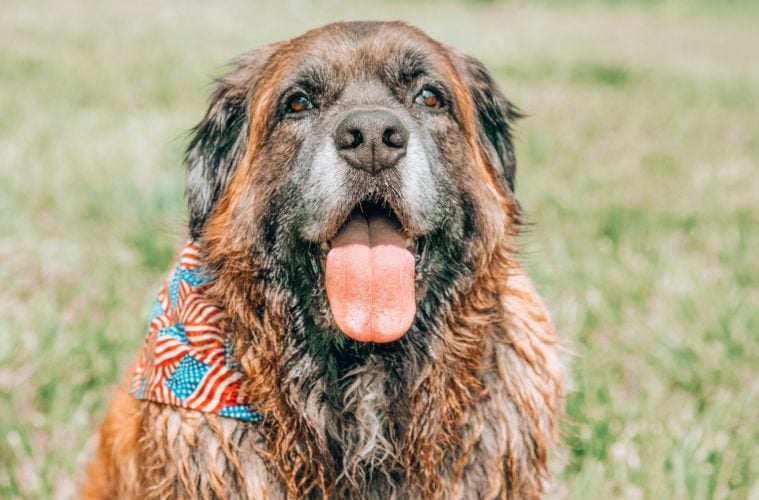Independence Day weekend is coming up in a few days, which means a lot of humans that are in need of dog safety tips for the 4th of July. To ensure that your furry friends stay safe, calm and happy during festivities, we chatted with Courtney Briggs, the Head Trainer of Zoom Room Dog Training to get some expert dog safety tips for the 4th.
Why is it important to consider dog safety tips for the 4th?
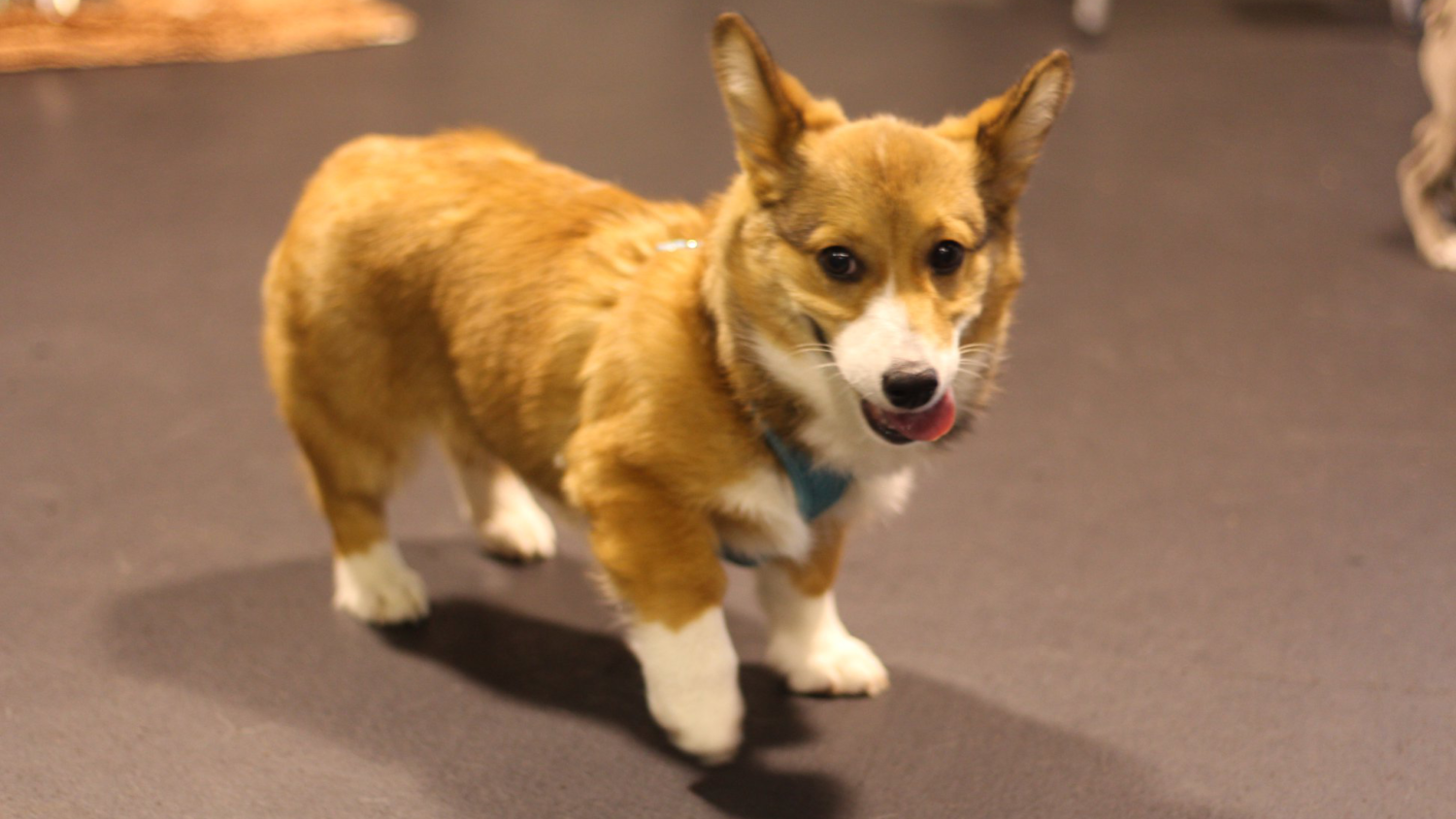
Courtesy Zoom Room Dog Training
On 4th of July, and during the days/weeks leading up to it, dogs have absolutely no understanding of what the scary loud fireworks noises are. It’s up to us humans to comfort them (the right way) and help our dogs through this stressful time.
The loud explosions, bright lights, and burning smells given off by fireworks overwhelm and overload a dog’s senses—including the crowds of people that usually congregate for fireworks. Everything about this is terrifying to a dog. Most of us aren’t fortunate enough to have been able to socialize and desensitize our dogs around fireworks before the pup reached 4 months old (the puppy socialization window closes at 4 months of age), so fireworks are scary to MOST dogs.
It’s important for us to be compassionate and understand that we can’t just tell a dog to “get over it.” Because socialization is such a critical part of puppy training, we recommend Zoom Room’s puppy training book, Puppy Training in 7 Easy Steps, which has extensive information about how to properly socialize a puppy.
Most pets will flee from all the noise, which is why there’s an uptick in lost dogs every year around 4th of July. They run away from the scary things going on. Every year, shelters see a huge influx of lost pets due to the fireworks. It’s up to us to advocate for our dogs, and to ensure their comfort and safety. In fact we owe it to them to do so. Dogs rely on us to take care of them, and that is never limited to just providing food, water, and shelter. It means compassion, empathy, caring, and helping them when they are in need. Being proactive in the lead up to 4th of July will not only help our dogs, but help alleviate some stress for us in terms of not watching our dogs suffer from the fear, and not having our dogs run away or otherwise experience all the negatives that come along with fireworks.
What are some things owners should be aware of ?
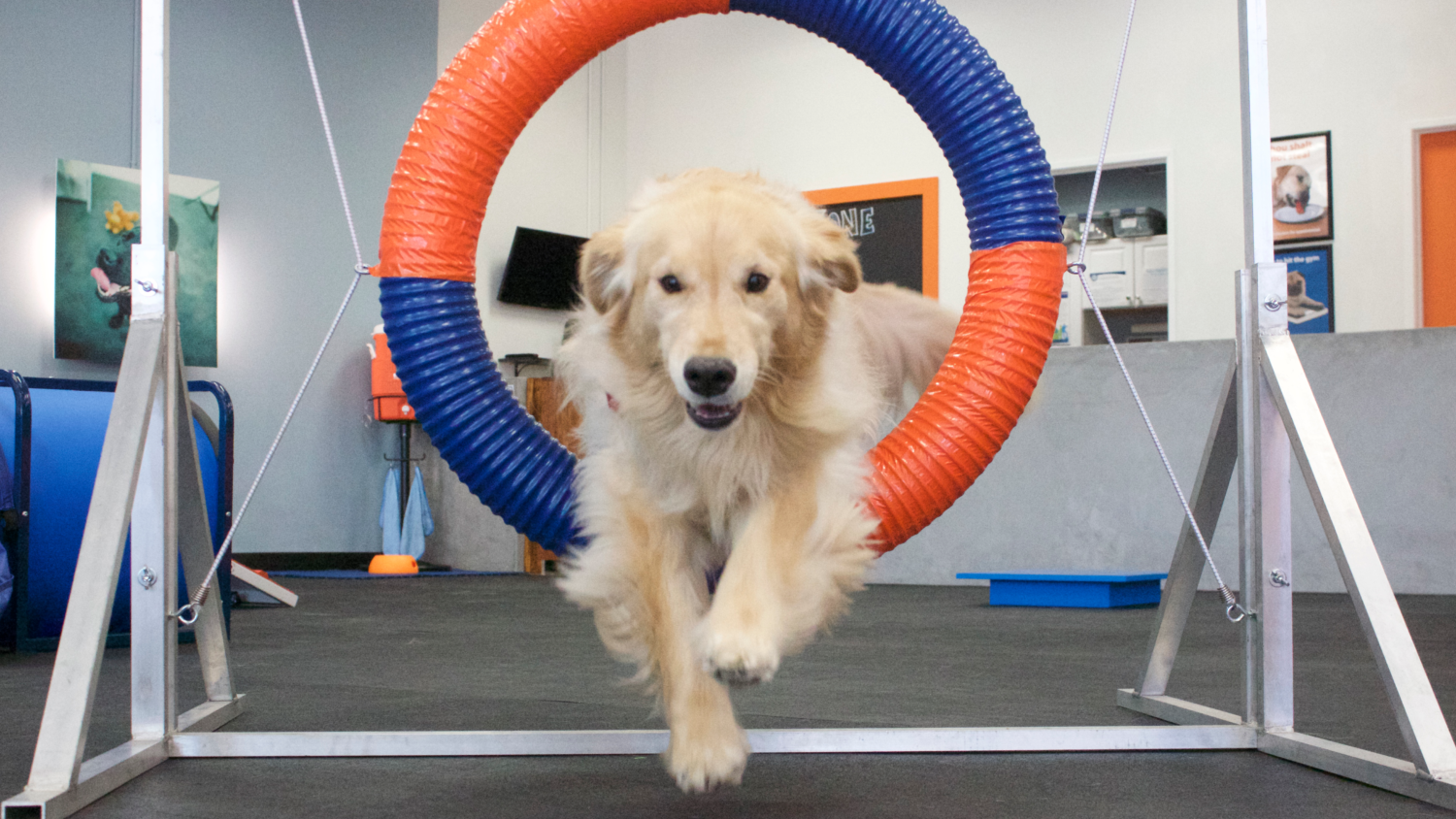
Courtesy Zoom Room Dog Training
Never anthropomorphize your dog. While we humans may like comfort and coddling when we are afraid, this does not mean that this type of comforting is what a dog needs or wants. In fact, if we aren’t careful, coddling our dogs during fearful events can actually make it worse. Remember that dogs don’t speak your language. Telling them “it’s okay” over and over is not soothing, helpful, or effective. In fact, your own anxiety expressed through saying “it’s okay” repeatedly can be picked up by your dog, adding to their stress.
As hard as it is to see your dog in distress, it’s extremely important that YOU remain calm. Maintaining our own calm is one of the best ways to help our dogs. Timing is everything when it comes to trying to physically comfort your dog. If it’s done in the wrong moments, we could exacerbate the fear. Working with a professional positive reinforcement dog trainer can help humans to do calming and comforting actions at the right time, and in the right way.
Be aware that when something scary happens, dogs go into fight or flight mode, and usually they’ll try flight first. So your dog will keep trying to find any place that is less scary, which can mean running away from their own home. If a fearful dog is restrained or otherwise unable to find a safe place to run to, these circumstances could lead them to respond with a snap or bite. One example: if a dog owner tries to indelicately interfere by pulling Fido out from under the bed, sofa, or other hiding spot, the fearful dog may respond with a snap. This is NOT because the dog is “angry” or intentionally trying to bite. The dog is simply in survival mode in that moment. Dog parents should never attempt to force a dog to do anything, and especially not when the dog is experiencing fear.
Food overcomes fear. Food and treats are the best tools for working on desensitizing and counter conditioning around scary things.
What are signs your dog is in distress, and what does that lead to?
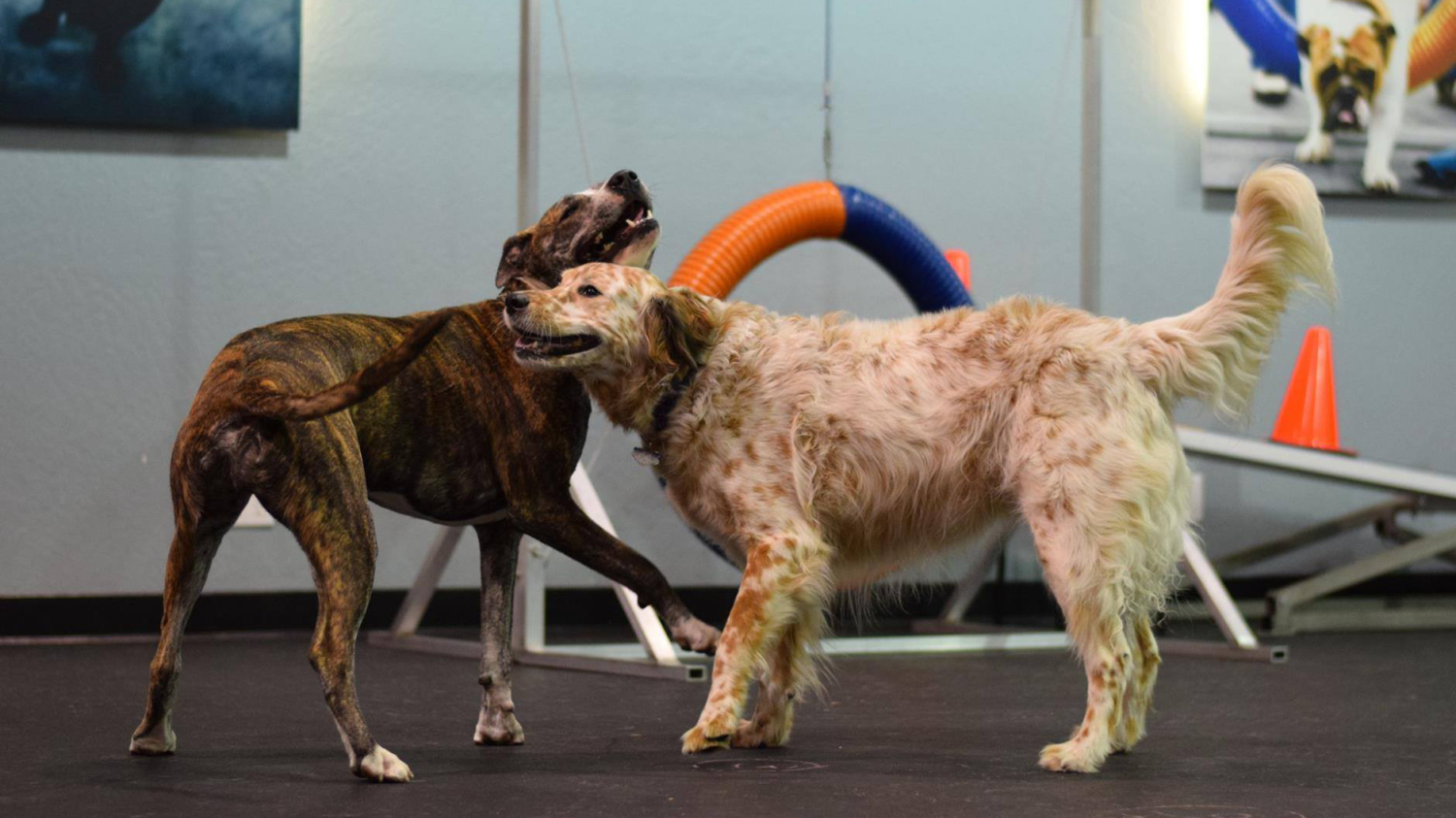
Courtesy Zoom Room Dog Training
Every dog parent should educate themselves about dog body language, since this is a dog’s primary way of expressing how they’re feeling. Besides vocalizations, body language is the only other way for a dog to communicate with you. The following are signs of fear and anxiety in dogs: pacing, not being able to settle, pinned-back ears, tail down or in between legs, panting, shaking, barking, excess scratching, hyper alertness, no food drive. If left unchecked, these signs of distress can lead to digestive, dermatologic, and other health and behavioral issues, so it’s important to work with your dog to help them through environmental stressors. You may also notice self-calming behaviors, which include: tongue flicking, excess sniffing the ground, continual yawning, and full body shake-offs. These actions help dogs to relieve their stress. These self-calming actions can also be a good sign that a dog is shaking off some of its fear and that things are getting better for the dog.
How can you avoid this? What are your dog safety tips for the 4th?
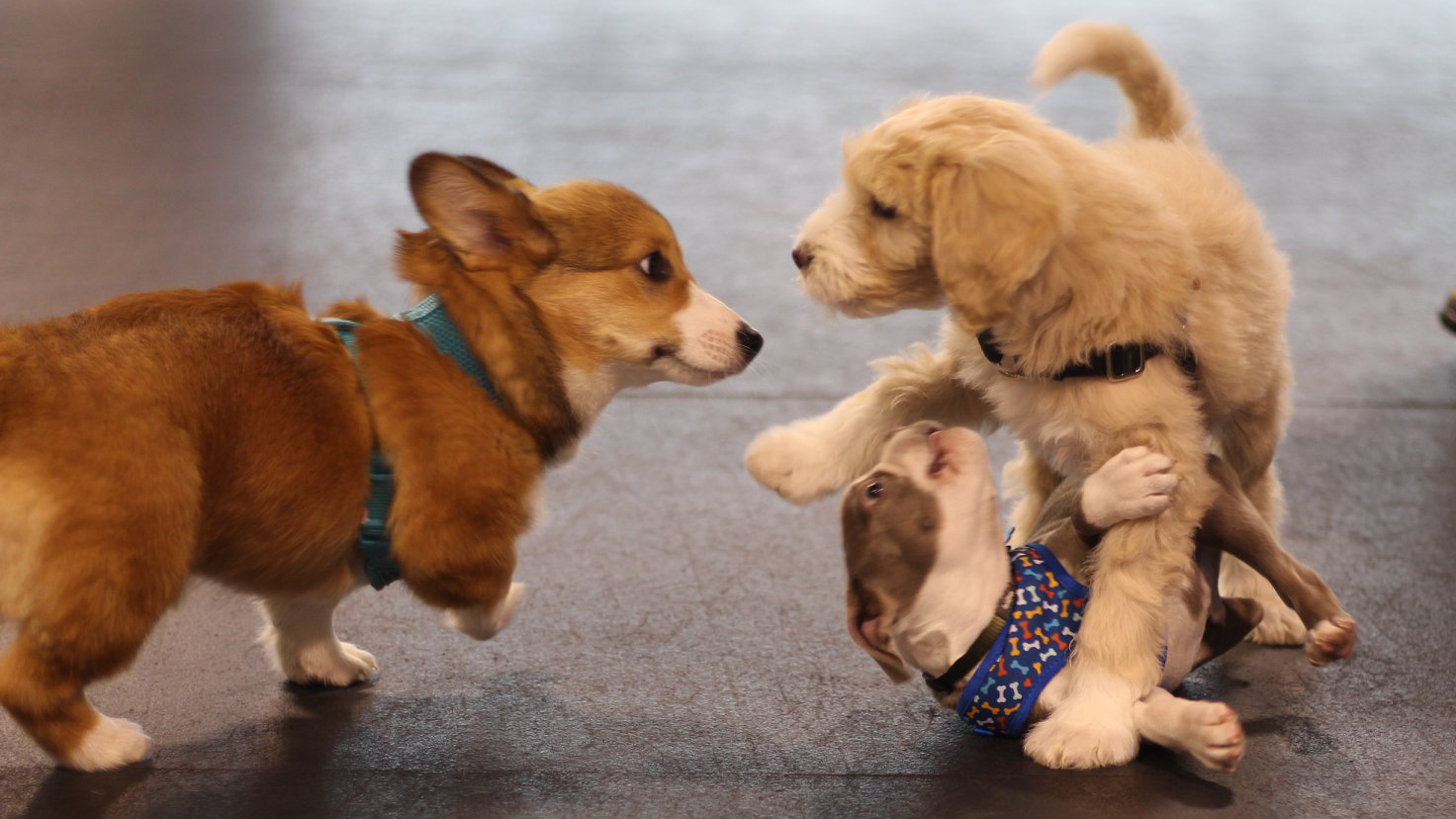
Courtesy of Zoom Room Dog Training
Dog parents should always do their best to be proactive.
Observe what triggers fearfulness in your dog so that you can do everything possible to preemptively ensure your dog’s comfort during stressful events.
For those who have puppies aged 4 months or younger, dog parents can work with a professional dog trainer on socializing and desensitizing puppies to fireworks.
For adult dogs, you can create a safe space by finding a spot that is going to stay as quiet as possible during fireworks. Provide the dog’s bedding, favorite toys, and a long-lasting food puzzle such as a filled and frozen Kong or long lasting bone to redirect focus on something positive instead of focusing on the scary noises (look online for ideas about what to put inside Kongs; be creative as you wish).
Again, food overcomes fear. If 4th of July time means that your dog gets a yummy filled Kong every time fireworks happen, this can help alleviate a dog’s fear of fireworks. (Counter conditioning). Once it’s captured that fireworks mean good things for your dog, moving forward you won’t have as many challenges brought about by fearfulness. If that correlation has not yet been established, dog parents should prepare for keeping their dog comfortable. Remember: calm begets calm.
Other tips for preparing for July 4th fireworks:
- Make sure your dog has proper identification on its collar, in case they get out.
- Get walks and potty time done before dusk.
- Close all curtains to help muffle noise.
- Find the quietest space and let that be your dog’s safe zone. Create a den or two in this space for your dog to hide in if they want to. Closets can make a great spot for a den, but make sure the door will stay open and that your dog can come and go freely.
- Have one dog parent available to stay home with your dog to keep them comfortable. (I regularly forego 4th of July so that I can stay in the bathroom with my dog during the mayhem.)
- Prepare food puzzles for your dog to work on. Use VERY high value treats—anything that is all meat and contains no fillers. The meatier and stinkier, the better.
- Calming piano music can also help. My favorite is Through a Dog’s Ear, available on most streaming services.
- Lavender spray can be placed on the dog’s bed, or on a bandanna around their neck so the dog can enjoy the calming benefits of lavender. Spraying it directly on the dog’s coat is not recommended.
- CBD tincture can also be a great help. Be aware that there are a lot of CBD products on the market, many of which are either ineffective, or administered incorrectly, so do your research. My all-time favorite is Super Snouts Photo 300. Their website provides a wealth of information about the science behind how and why their CBD products work. Note that tinctures should be applied in the mouth between cheek and gum (buccal), or under the tongue (sublingual). No food or drink for 20 minutes after administering. Do NOT put on food. Give CBD tincture about 30-45 minutes before Armageddon starts.
- Work with a professional positive reinforcement dog trainer to help you with desensitization & counter conditioning.
- If your dog’s anxiety is especially excessive, speak with your vet about medication options (medication should be more of a last resort after trying other techniques).
Is Zoom Room doing anything specifically for 4th of July?
At Zoom Room we strive to provide education about dog behavior, and how to manage the challenges of events like July 4th. We offer private lessons to teach humans how to help their dogs during this scary time. Because desensitization and counter conditioning are all about proper timing, working with a dog trainer will yield the best results because they observe and guide humans throughout the training. Our motto is: We don’t train dogs, we train the people who love them.
Zoom Room has locations throughout the country – on both coasts! To find a location near you, click here. There’s still time to act on these dog safety tips for the 4th!
Advertising disclosure: We may receive compensation for some of the links in our stories. Thank you for supporting LA Weekly and our advertisers.

